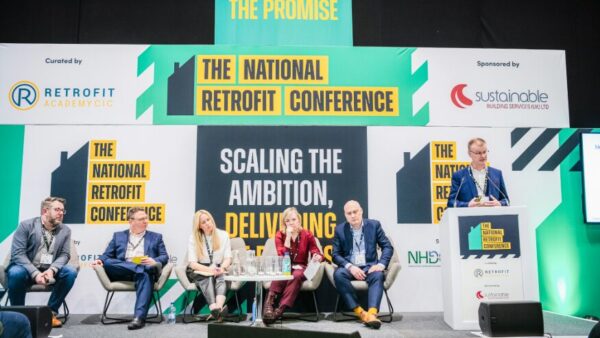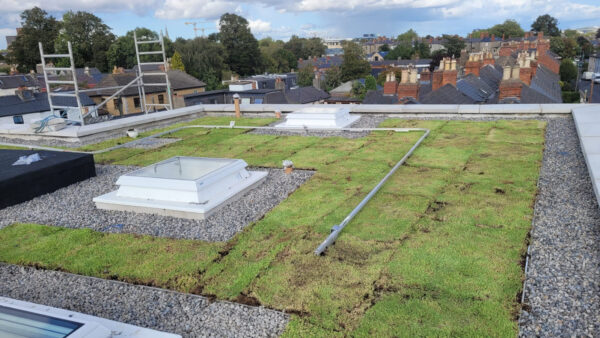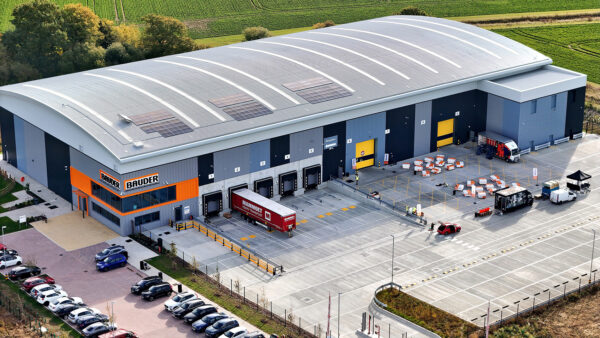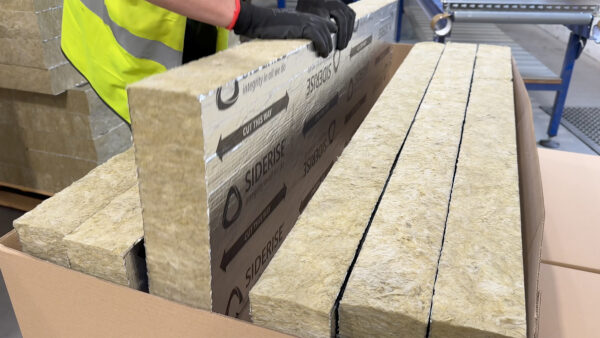Annette Borén is not just Head of Finance in Northern Europe for tool manufacturer Hilti, but also in charge of its sustainability strategy in the region. She tells CM how thinking holistically about the tools construction companies use can boost health and safety, reduce the impact on the environment and swell the bottom line – all at the same time

It’s not surprising that, as head of finance for Hilti in Northern Europe, Annette Borén has a head for numbers.
But Borén isn’t just interested in the pure financials – she is keen to show companies how they can improve their bottom line at the same time as safeguarding workers and reducing environmental impact through the use of high-quality, efficient and safe tools.
She explains: “Hilti is about cutting-edge technology. We constantly try to innovate ground-breaking products for the construction industry because we want to help with productivity but also with health and safety. Jobs that are done quicker, with healthier workers, help the bottom line. At the end of the day, that is great for all of us who work in finance.”
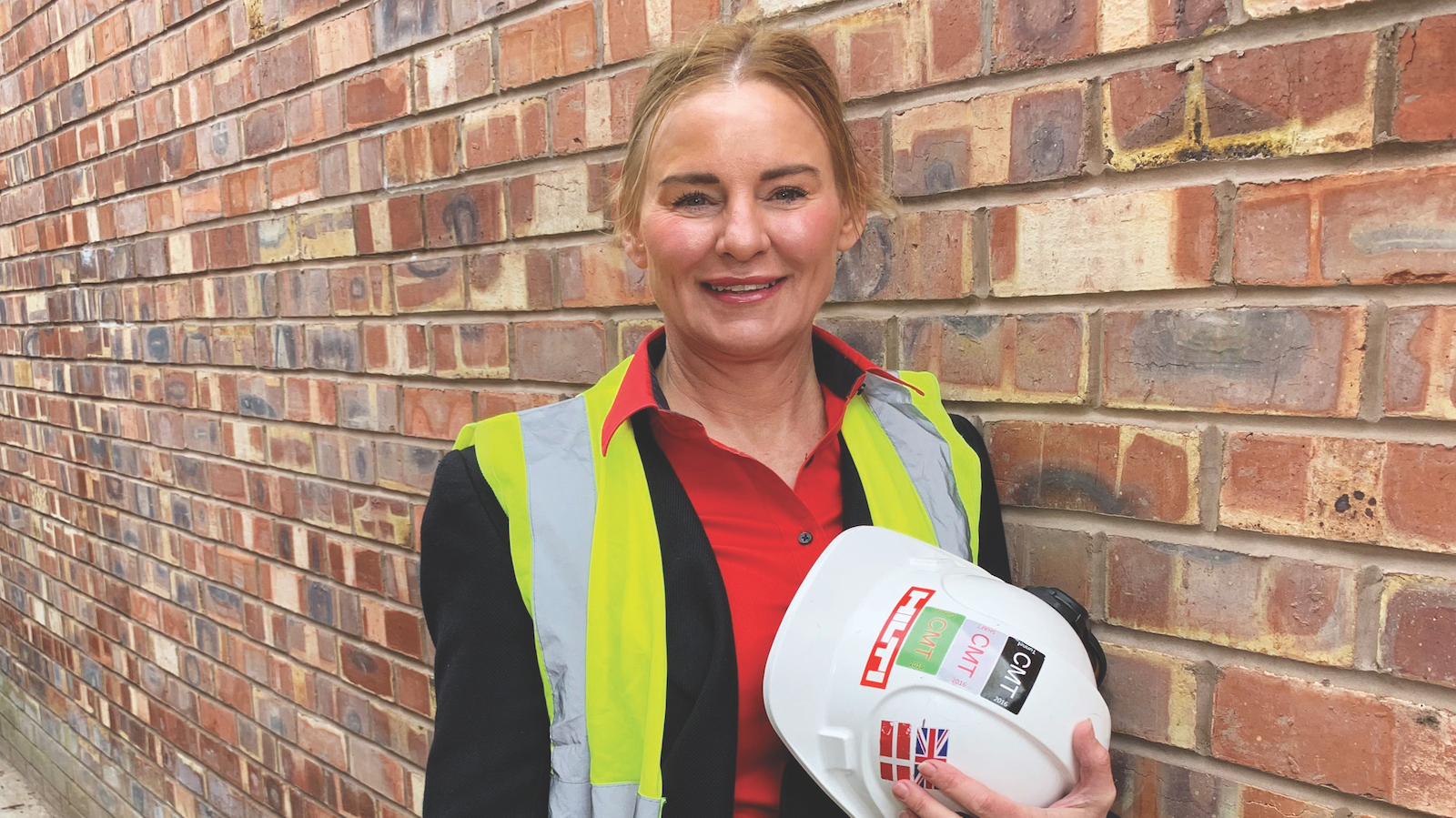
Borén adds that lighter, longer-lasting tools are not only easier to use but also have a positive impact on the environment. She points to Hilti’s handheld petrol saws. Traditionally one tool and one insert is required for 14-inch depths, and a second tool and a second insert for 12-inch depths. But Hilti’s petrol saws have a 12-inch blade that can cut to the depth of a 14-inch blade.
“Having a 12-inch blade that cuts as deep as a 14-inch blade is really great for the environment,” she says. “You need one tool, one insert and it’s great for the finance people because you don’t have to buy two blades and two petrol saws. The petrol saw is smaller, more compact and less heavy [than other tools on the market], which means it contains less material. You can connect it to water, without the need for a pressurised water cylinder, or a vacuum so it reduces the silica dust where the worker is operating. So it also helps the customer because they have a healthy, happy worker.”
Changing attitudes
Borén admits that it can sometimes prove a challenge to convince firms to pay more up front for a higher-quality tool. But she urges businesses to look beyond the upfront cost.
“Jobs that are done quicker, with healthier workers, help the bottom line”
“I think we all need to start to think differently,” she says. “At the end of the day, if the tool costs slightly more but it helps to protect the worker and increases productivity because it works faster and also means that you don’t have to replace someone because they have gone off sick, that is a significant advantage. Isn’t it a given that we want workers to work in a healthy environment and to be protected?
“By the time they display symptoms from conditions like lung disease, hand-arm vibration syndrome (HAVS) and musculoskeletal injuries, it’s too late. It takes years and years to build up those injuries. We need to think more strategically and long-term to protect people, and also from an environmental perspective.”
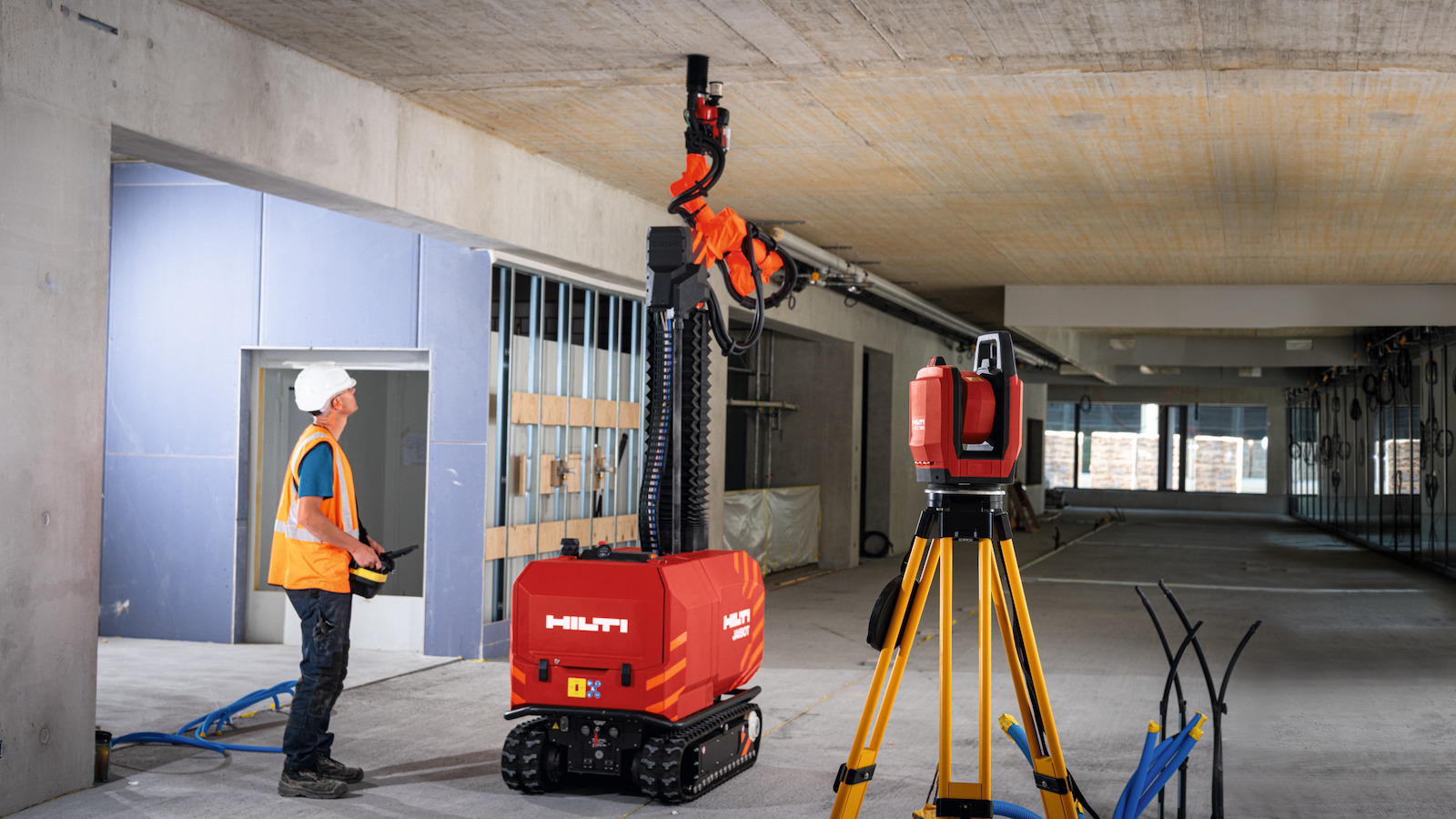
She also points out that companies could save significant money in the long run if they use tools that protect workers from long-term health conditions: “There is a wave of litigation coming to compensate people impacted by these conditions. But by using the latest innovation and technology we can reduce this.
“We already have alternative methods for protecting people from dust and silica, such as shot firing and diamond coring, which operate alongside the best possible systems for completing tasks traditionally where there is no alternative, such as drilling or breaking. We don’t need to stick to the way we have always done things. It is important to create awareness and talk about it.”
Annette Borén CV
2013-present: Head of finance and sustainability, Northern Europe, Hilti, based in Manchester
2012-2014: Non-executive board member of Swedish bank Sparbanken Öresund
2008-2013: Vice-president and chief financial officer of telecoms company Doro
2005-2008: Finance director of Länsförsäkringar Skåne
2001-2004: Regional manager/sales director of financial firm Skandia
1996-2001: Financial controller, Atlas Copco
“We take a holistic approach and develop a full system,” she explains. “When we develop a tool, we don’t think about just one thing such as HAVS, we think end-to-end about the full impact the tool will have for people, on the environment and on productivity.”
When it comes to cost, Hilti also has another solution which can help companies to see the benefits of tools without having to commit to investing in them – particularly important when it comes to a more costly diamond coring tools or the handheld petrol saw.
“Our tools might in some cases be more expensive and we have very specific tools for specific tasks but you can hire them with our tool hire partners across the country, try it and think about whether or not you want to invest. Or you can just hire it for a very specific job. So I think we open the market up to everyone. It is not just the bigger customers who can afford to invest in a tool portfolio.”
Productivity amid the pandemic
Borén is keen to highlight how Hilti tools can boost productivity – a crucial consideration when sites need to maintain social distancing.
Hilti fastening tools allow for shot-firing rather than conventional drilling, which she argues can be more productive for some tasks, as well as cutting down on dust. Meanwhile, using diamond core drills instead of breakers also creates far less dust and requires fewer workers to clean up.
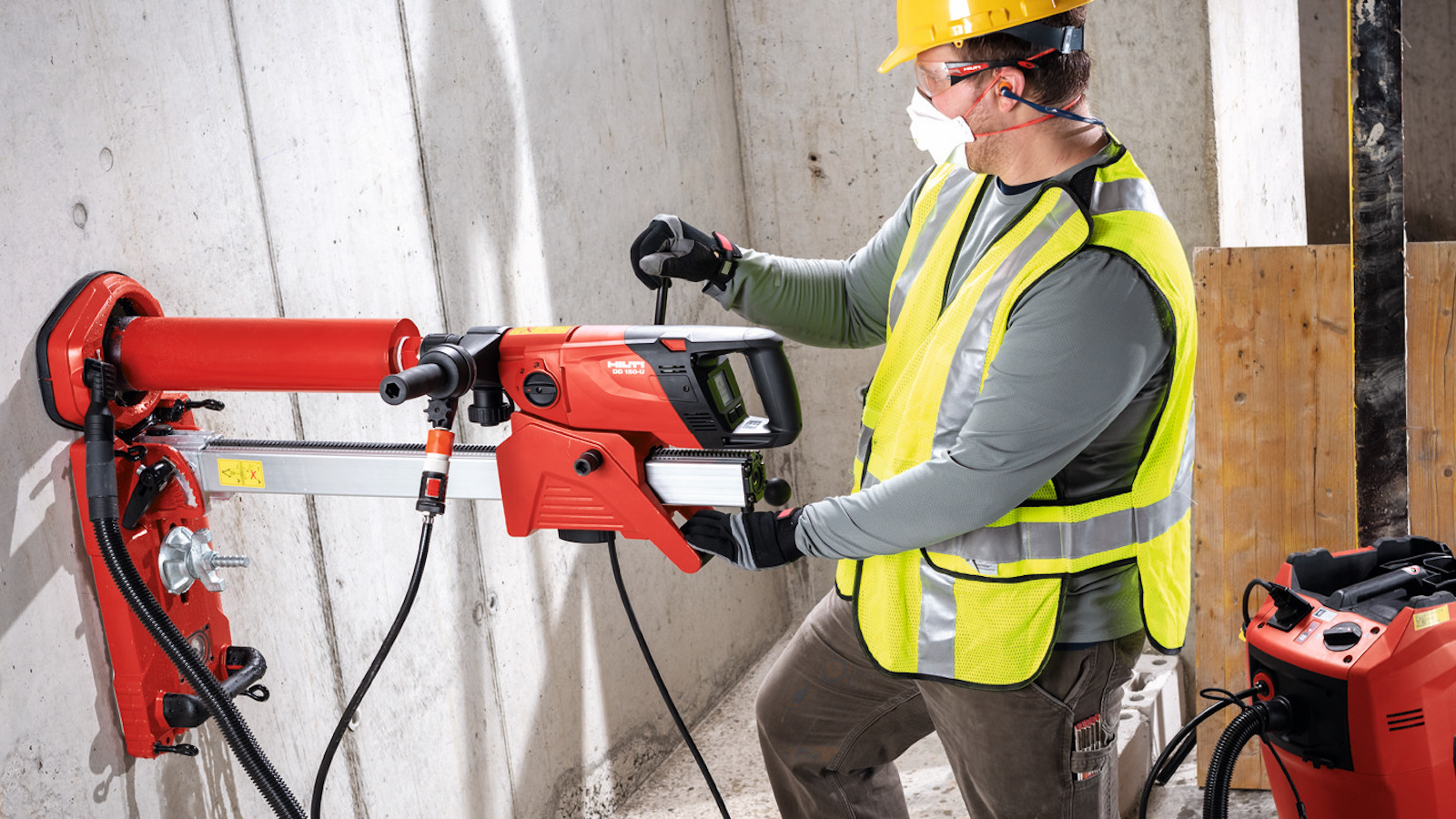
“The difference in productivity between using a breaker all day long or using a diamond corer that does the cutting is tremendous,” she says.
“Solutions like lasers and direct fastening mean you can work quickly and efficiently, which is key to reducing contact between workers. Social distancing on jobs like aligning objects such as cladding, ceilings and dry lining is a struggle but with Hilti’s tools you can overcome these problems easily.”
Coming back to the theme of Hilti’s holistic approach, she concludes: “It benefits everyone: it benefits the worker, it benefits people like me who oversee the P&L, and it helps our customers to get the job done quicker.”
Robots and exoskeletons
Two Hilti innovations are taking construction into a new future
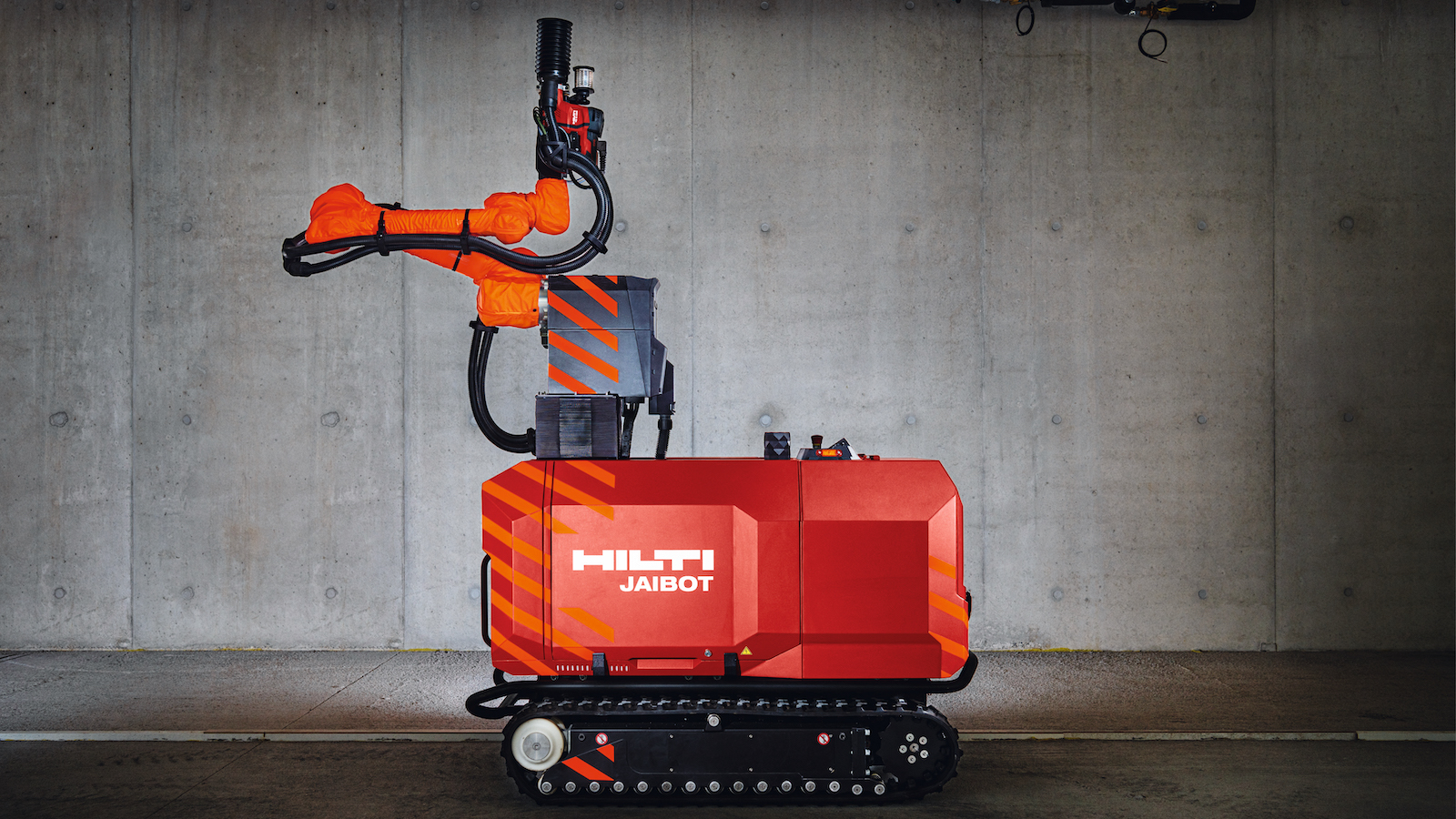
Hilti’s new Jaibot is a robot that can take on the repetitive work of overhead drilling from humans.
Using BIM and digital planning as a base, the semi-autonomous machine has been designed for mechanical, electrical and plumbing (MEP) work.
The cordless system can work for up to eight hours between charges and has a built-in dust removal and marking system. It marks and drills holes according to a digital plan, leaving workers to simply operate the robot.
To operate it, data from AutoCAD or Revit can be uploaded to the Hilti cloud, with the site laid out using Hilti’s total station PLT 300. Hilti says the machine, which is capable of drilling thousands of holes to a preset depth and diameter, can reduce the risk of human error and complete projects faster.
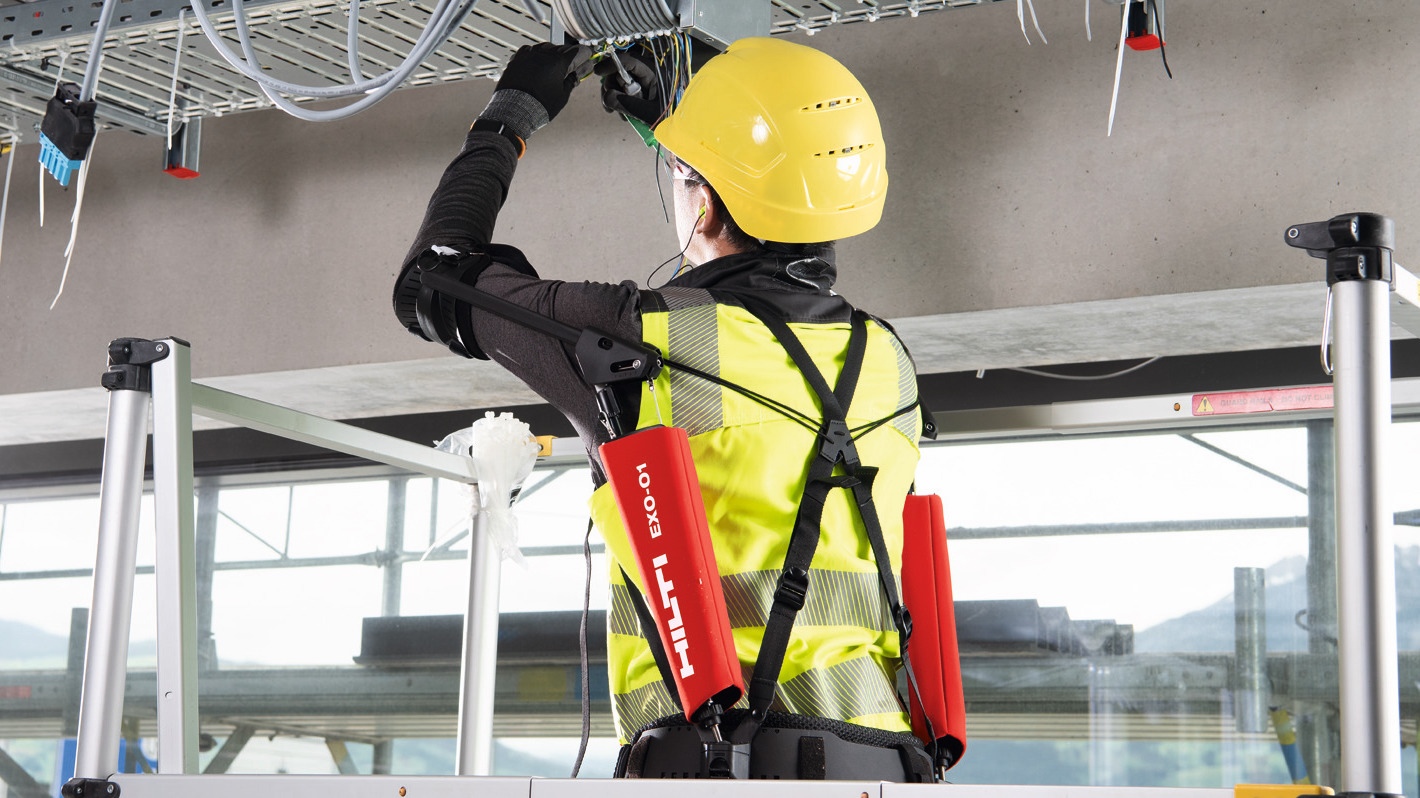
The Hilti EXO-O1 human augmentation device was launched last summer. The wearable exoskeleton aims to tackle health and safety as well as labour shortage challenges.
The device is focused on reducing the strain caused by working overhead and at shoulder height and above. It contains no motors or batteries but transfers the weight of a worker’s arms to their hips via arm supports using mechanical cable pulling technology.
Developed with orthotics expert Ottobock, it is claimed that it can reduce peak load on the muscles and relieve the shoulders by up to 47%.
This article has been produced in partnership with Hilti.


